Puppy Training Tips Featuring Gerry the Wirehaired Dachshund
We’re on the final straight of lockdown life (touch wood), so why not use this extra time at home to train your dog? Here are some tips for creating better communication between you and your pup, featuring Gerry, the Wirehaired Dachshund.
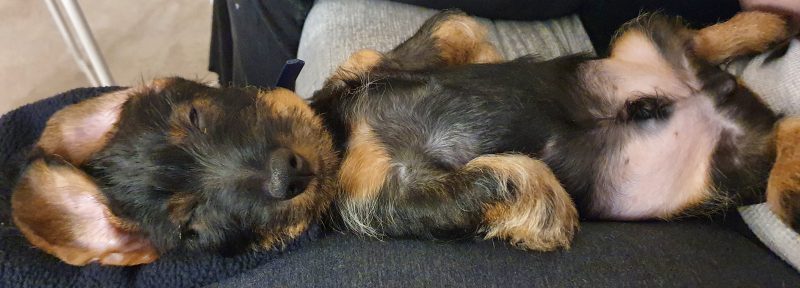
10 week old Gerry asleep on a lap
Mealtime Training
It is likely that your dog is at their most motivated to learn at mealtimes (when they are at their hungriest), so why not grab this opportunity to reinforce some basic training? We feed Gerry raw food for two of his meals which we offer by hand in return for a good ‘sit’, ‘down’, ‘stand’, ‘spin’ or ‘watch’. Training whilst feeding takes more time than just putting the bowl down in front of him, but it also means he consistently has two training sessions each day. You can also look for other opportunities to ask for basic tricks from your pup throughout the day, such as asking for a ‘sit’ before giving them attention. Gerry is allowed on the couch, but only in return for a sit and a paw.
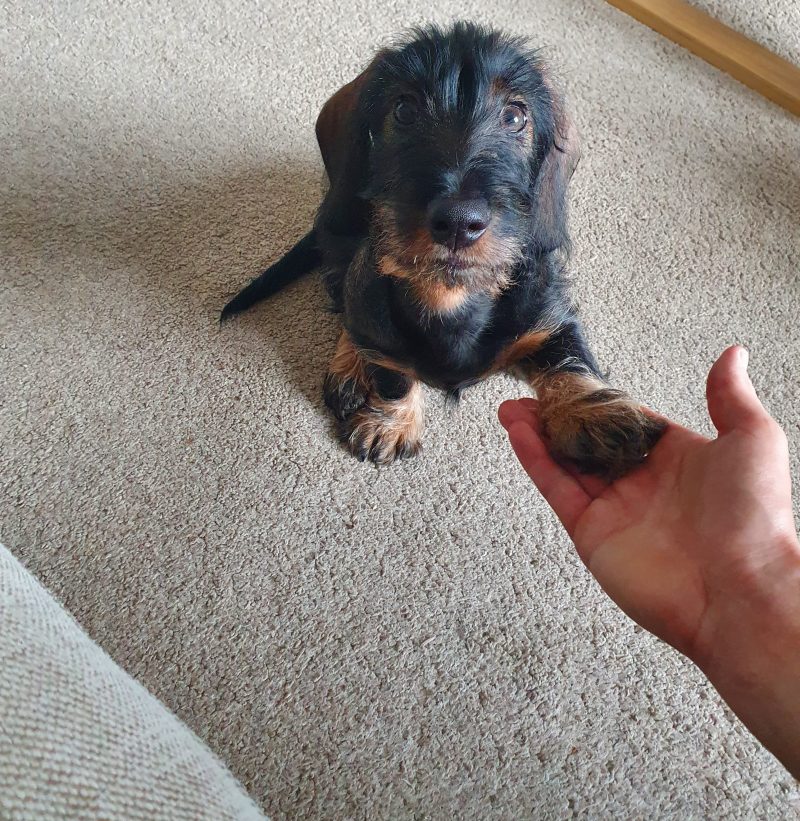
Gerry giving paw for access to the couch
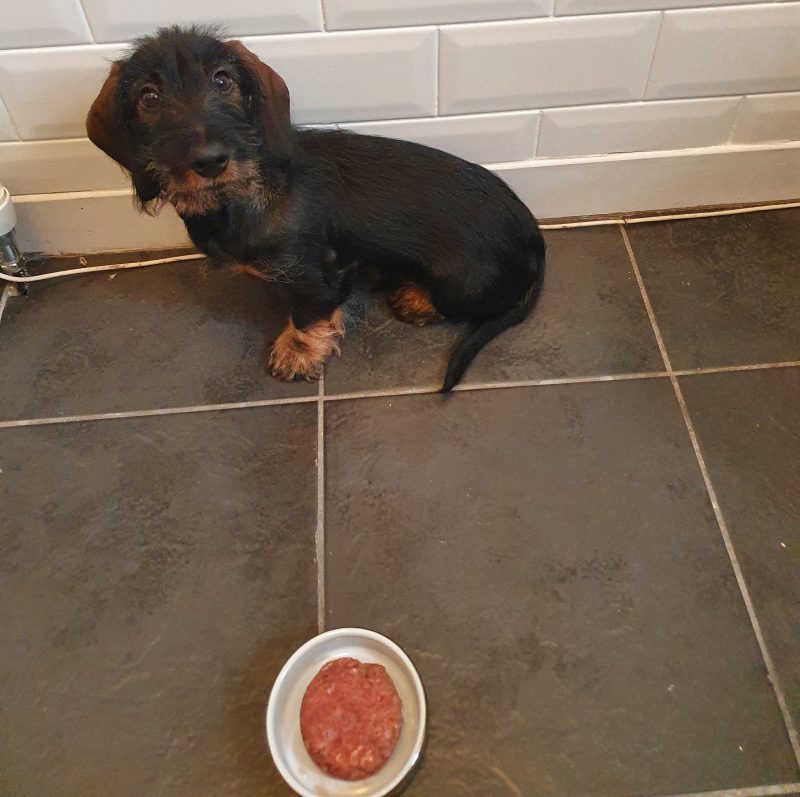
Gerry waiting for instructions in return for breakfast
Training ‘Watch’
We started training ‘watch’ the day we brought Gerry home because it opens a communication channel between you right from the beginning of your life together. We started this by giving him a bit of raw meat for making eye contact with one of us, then added the cue, and slowly strengthened the command by building up the expected duration and adding distractions. When training he now offers eye contact rather than staring at whichever hand has food in it, which makes learning other commands a lot easier. If he ever gets distracted with something that we would prefer he ignored, like a bird in the garden or a dog walking by, we can usually get his attention back by asking for a ‘watch’. The key with this is to ALWAYS reward a good ‘watch’ with a treat to maintain trust in the command, because this is something you’re going to be asking of your dog at the hardest times. If Gerry is being asked to turn his attention to me instead of a passing dog it had better be worth it!
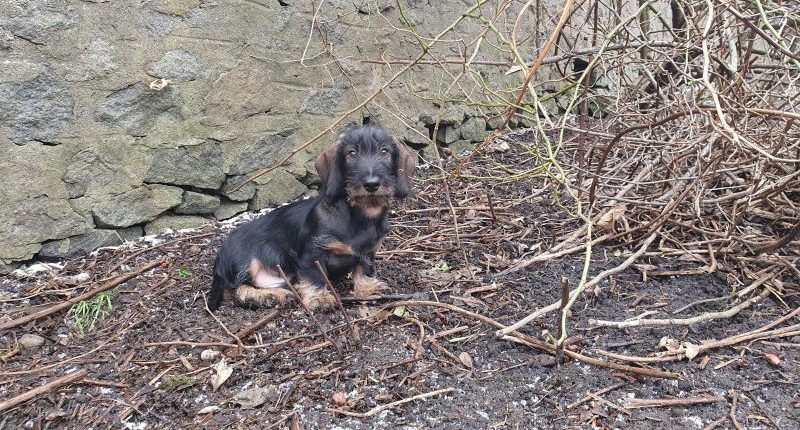
Gerry turning to watch whilst distracted in the garden

Treat please!
Biting
If there is one trait that unites all puppies, it is the love of biting. Just like a child explores the boundaries of what is acceptable behaviour, puppies use their mouth to test just how hard they can gnaw on you. It is up to you to set your limit on what is okay to bite and how hard is too hard, and then find a way of communicating that to them. We always try and keep a toy nearby that Gerry can sink his teeth into if he is in a playful mood. Sometimes he prefers to play with us than with a toy and personally I don’t mind a bit of mouthing so I am okay with that. But if he bites too hard I will yelp, give a stern ‘no’ and leave the room. Make sure you leave your pup with plenty of toys or chews to keep himself occupied before his attention is drawn to the corner of the couch or the Mini Wolf Den catches his eye! It takes time (and your patience), but eventually they will learn that being too rough just ends the fun early. Gerry can also be especially bitey just before he runs out of battery and falls asleep so we give him a chew to concentrate on and he konks out before we know it.
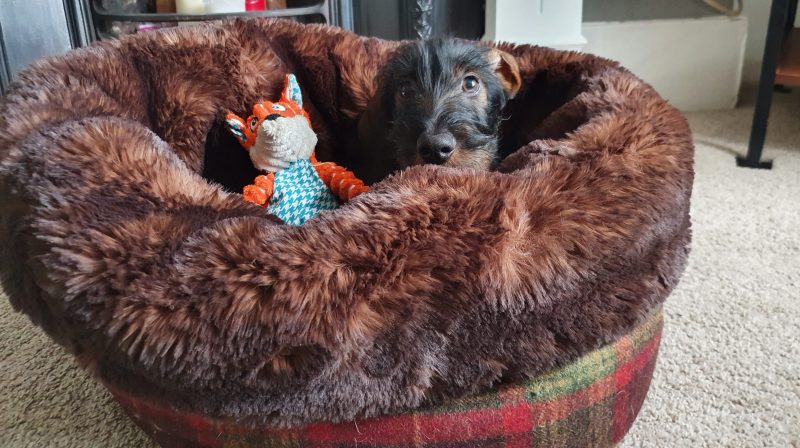
Gerry in his Mini Wolf Den with his fox toy
- Due to high demand, we’re out of Mini Wolf Dens and awaiting delivery of Abraham Moon wool fabric, but keep checking our website as we’ll have more ready soon!
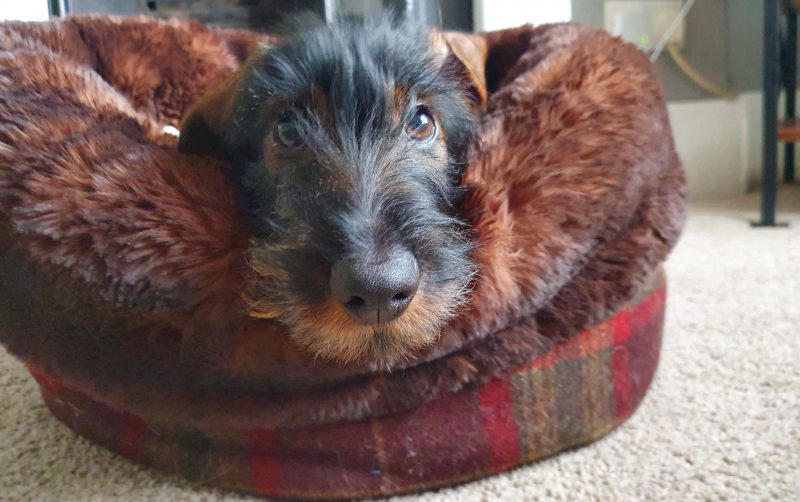
Gerry in his Mini Wolf Den
Crate Training
There are many reasons for training your dog to be happy by themselves in their crate. When you’re out of the house, asleep, or just busy, you’ll need to be able to contain them to prevent them from wreaking havoc. The first step to crate training is to make it an enjoyable place for them to be. Feed and play with them in there, preferably tempt them in rather than physically putting them in, and keep the door wide open to start with. The worst thing you can do is close the door behind them on first entry as if to say “Ha! I got you!”. Over the first few days only partially close the door and allow them freedom whenever they want it. Obviously you’ll still need to contain them somehow, so a penned off area is a good idea as it feels less restrictive to them than the crate. Drop treats in when they make themselves comfortable or show relaxed body language. When they fall asleep leave them alone, if they won’t rest try a Kong or some chilled-out background music – there are plenty of these videos on Youtube. Now here’s the hard bit; if they whine DO NOT return until there is a break, even if that is only for a few seconds. You can read more about dealing with separation anxiety in our Dog Lockdown Tips blog. Get a puppy cam – before you ask, yes I am slightly ashamed… maybe this is a step too far. However, it really does help and it was only £30 or so. Finally, avoid putting them in their crate as a punishment. The crate should be a happy place to be, not a prison.
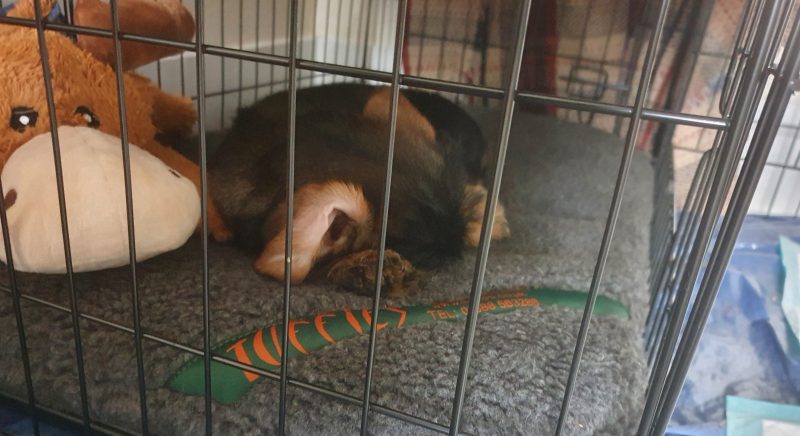
Gerry snoozing in his crate on a Durasoft Mattress Dog Bed with Luxury Fleece Mattress Dog Bed Cover
The Power of High-Value and Low-Value Treats
Establish reward ‘tiers’. Gerry’s is something like this:
- Chicken
- Cheese (always very limited amount as cheese can be bad for some dogs)
- Premium Dog Treat
- Basic Dog Treat
- Kibble
Knowing your dog’s treat preferences is useful for a couple of reasons. Firstly, you can increase the effectiveness of commands when you’re asking something especially difficult of them, like turning to you when they see a squirrel in the park instead of running after it. It’s still a close contest between chasing a squirrel and eating a piece of chicken but the chicken usually wins. If only Fenton’s owner had known this! Secondly, saving the top tiers for special occasions helps if they are nervous and you need to distract/reward them. Gerry, for example, isn’t a fan of the car so we save cheese for these journeys. Cheese wouldn’t hold the same value to him if we used it all the time. Lastly, you can use lower value treats as intentional distractions when training things like recall or ‘leave it’, rewarding this essential behaviour with high-value treats. For example with “leave it” you can put a relatively boring bit of kibble on the floor, cover it with your hand if they go for it, and reward with a much better treat (like chicken) if your dog successfully leaves the food on the floor alone. After only a few tries they’ll get the idea.
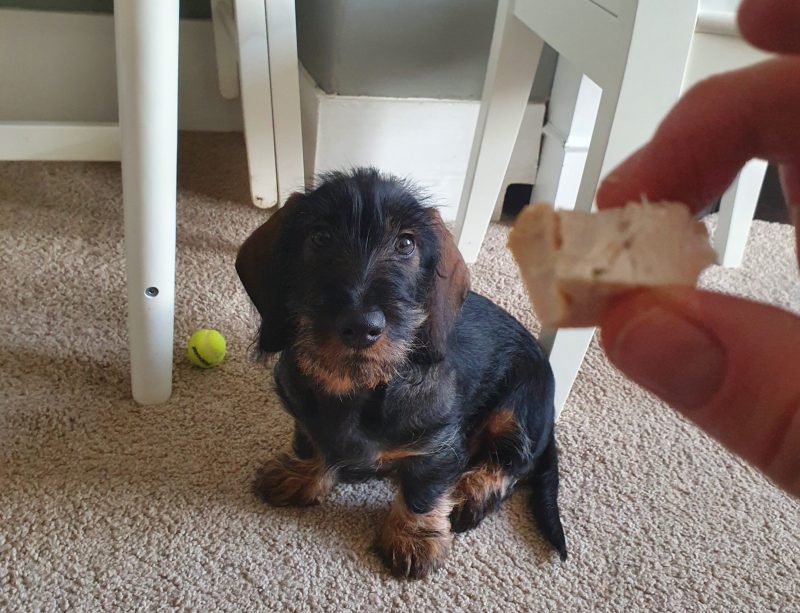
Gerry waiting for chicken treat
Good luck with your training. These tips apply to all ages, not just puppies, so build them into their daily routine whatever their age. Old dogs can learn new tricks and there’s always something to work on. For example, bath time needs work with this guy…
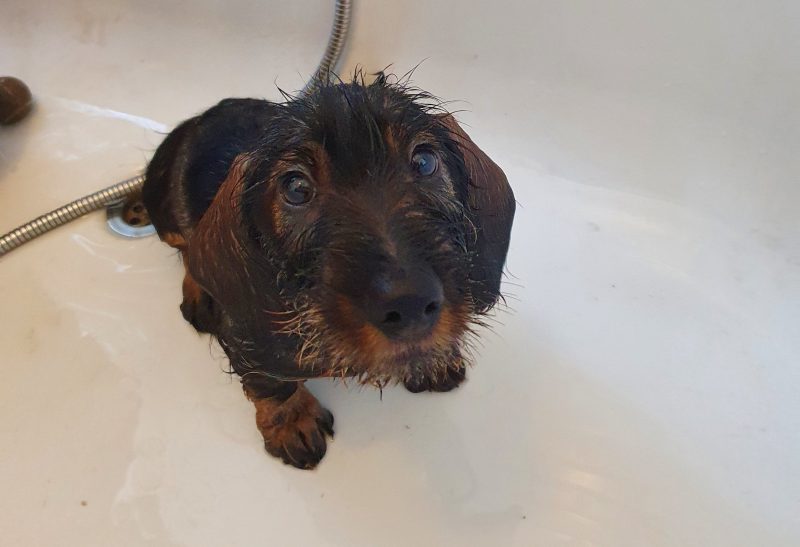
-
22/01/2021 13:06
Dexter the Labrador, the Paint Shop, and Puppy Tuffie Training
Scott Annison, the owner of the painting and decorating supplies shop 'Trade Secrets' takes his 6-month-old Labrador, Dexter, into work with him. He talked to me about the decision to get a dog over lockdown and the pros.. -
23/02/2021 12:33
A Brief History of Dogs and a Really Tough Tuffie for your Pet Wolf
Why do we feel such a close connection with our dogs and how did this relationship between our species begin? Here is a brief history of the alliance between humans and canines which started thousands of years ago betwee..



